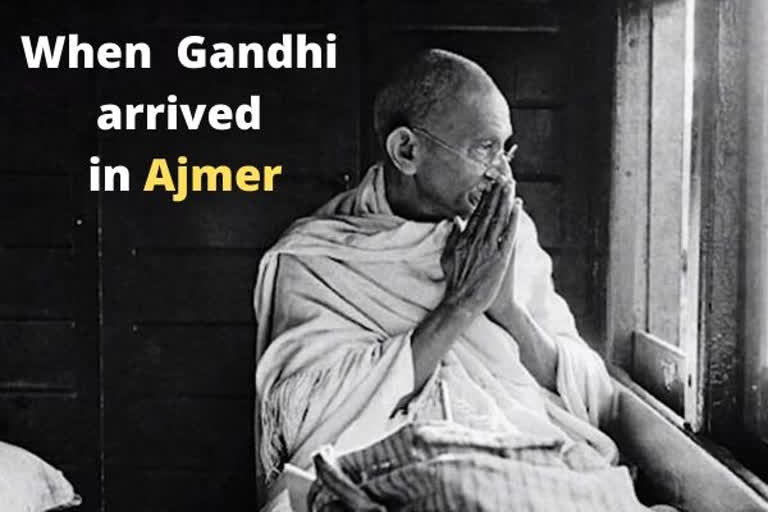Ajmer: At the height of the freedom struggle, Ajmer played a critical role where revolutionaries took major decisions to combat the British rule. It became an ideal spot for reformers and revolutionaries to execute their strategies because of the overwhelming support they received from the local residents.
Small wonder then Mahatma Gandhi visited the city for the first time in 1921 followed by 1922 and 1934.
In 1921, Gandhi visited Ajmer during the non-cooperation movement, in 1922 he took part in Jamiat-Ulama-i-Hind conference and in 1934 he made a secret visit in connection with the Harijan movement.
In his last trip to Ajmer, Gandhi inspected several Harijan colonies and was appalled to note the lack of drinking water in many places. He dug up a small pond with the help of the municipal committee.
In addition, Gandhi also opened a school which was later named 'Happy'. Around six Dalit students were then given free education. Renowned freedom fighter Pannalal Maheshwari took the responsibility of the school and later expanded it.
Talking to ETV Bharat, Shashi Maheshwari, son of Pannalal Maheshwari, said that the school grew up from humble beginnings and over the years expanded gradually.
Interacting with our correspondent, former MLA Shri Gopal Baheti told that Bapu wanted to eliminate “untouchability” in Ajmer so that everyone could unitedly take part in the freedom struggle.
Further, he reiterated that it was Gandhi’s effort that made radical revolutionaries accept the path of non-violence.
To restore the legacy of Gandhi in the city, Baheti suggested that a museum be established in Ajmer.
ALSO READ: Mahatma Gandhi death anniversary: ETV Bharat reaches Gandhi Smriti Sthal




